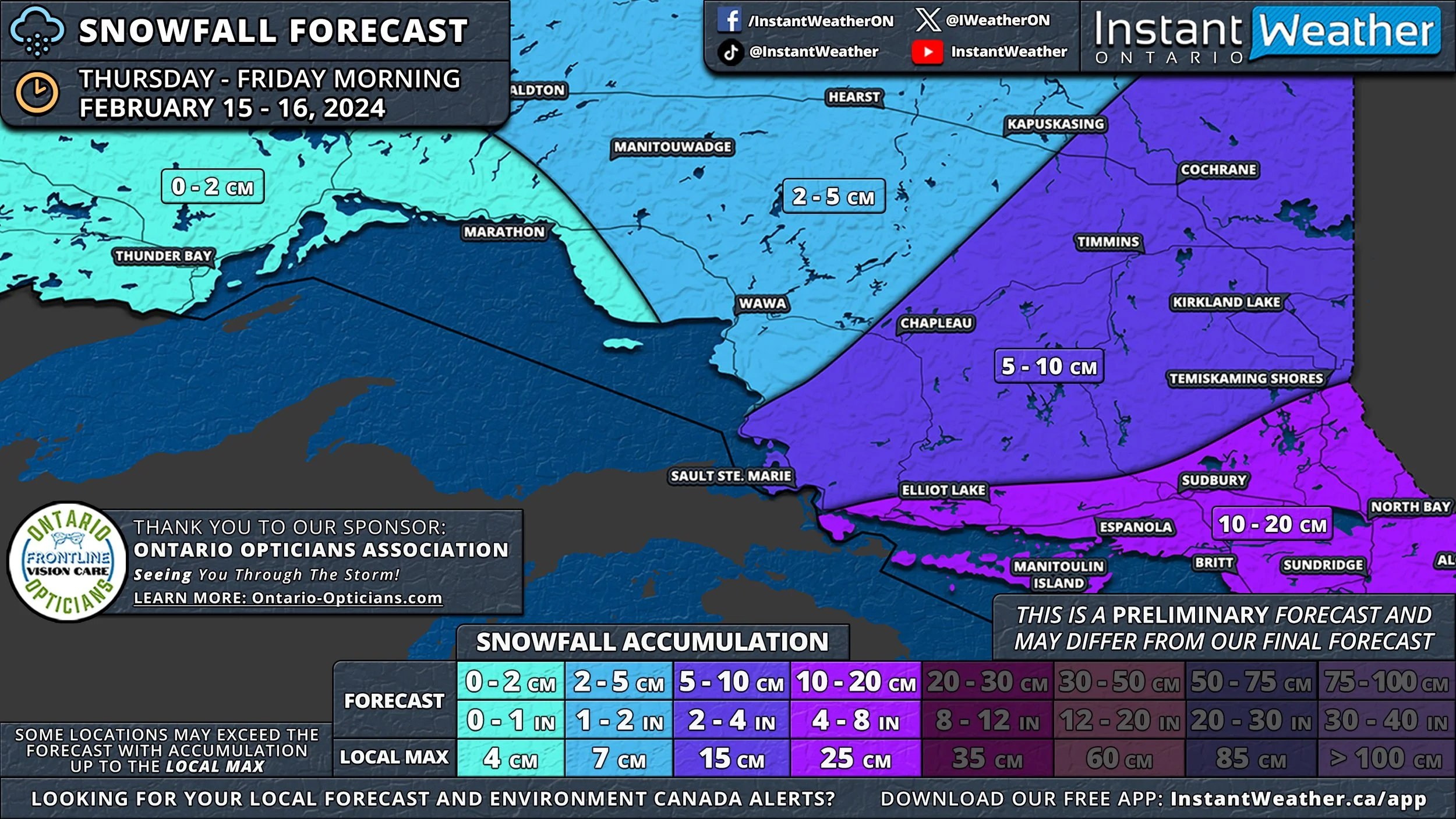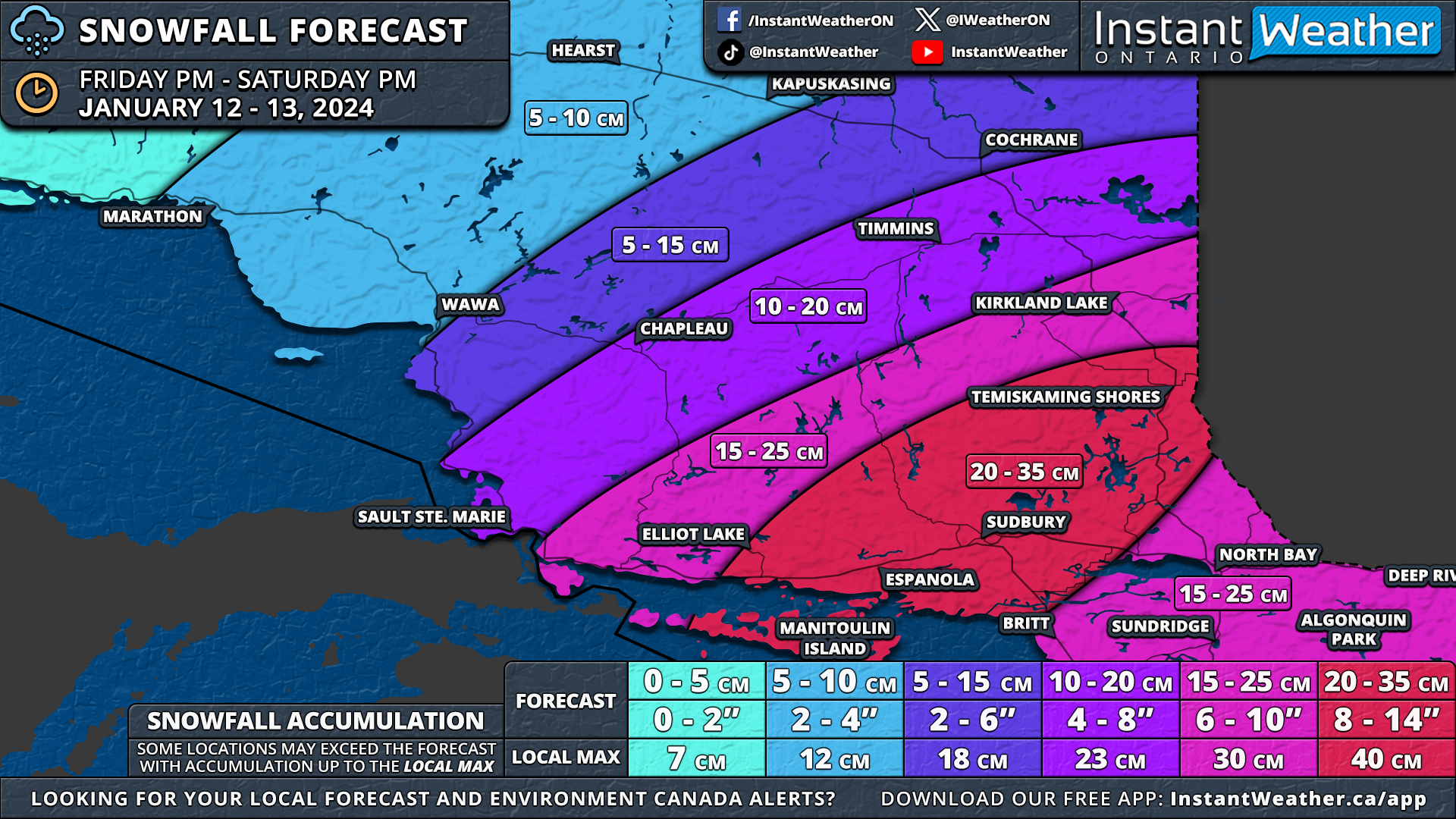Widespread Strong Severe Threat on Thursday for Southern & Northeastern Ontario
/The arrival of Ontario’s first prolonged heatwave of the season will start with a bang as a potent severe threat is expected on Thursday. Temperatures are predicted to soar into the upper 20s or even low 30s, providing a preview of what next week will feel like.
This heat, combined with an approaching cold front, is expected to spark off some intense storms during the afternoon and evening hours across Southern and Northeastern Ontario. There is a widespread 'strong' risk for severe weather, covering much of Central, Southwestern, and Northeastern Ontario, where damaging wind gusts, large hail, and a few tornadoes are possible.
In our preliminary forecast, we included a 'significant' risk zone on our map. While this event still looks quite dangerous, we have decided to downgrade to a 'strong' risk for our highest level in this forecast. To be clear, severe storms still seem almost certain in a large swath of Southern Ontario into Northeastern Ontario during the afternoon and early evening hours.
This isn’t to downplay what could still be a dangerous event, but we are careful about only using the higher severe levels for the strongest severe risks. The data no longer supports the criteria for our significant risk category. We feel confident that the 'strong' risk will be sufficient to cover these storms today.
We are already seeing storm development across Northeastern Ontario with severe thunderstorm warnings issued by Environment Canada as of 12 PM. Based on the latest models, further storm development is expected in a line stretching from Elliot Lake, across Manitoulin Island, and over Lake Huron between 2-4 PM.
This line will slowly track east, coming onshore between the Bruce Peninsula and Goderich around 4-6 PM. There is some uncertainty in the exact timing, so this may be off by a few hours if it arrives earlier or later than expected.
Additionally, we may see some isolated storm development ahead of this line across Central Ontario, especially around Georgian Bay and Lake Simcoe, anytime between 4 to 8 PM. These isolated storms will have a strong environment to work with and could present severe hazards including hail up to the size of golf balls, damaging wind gusts, and tornadoes.
By the evening, the focus will shift towards more of a damaging wind threat, although an isolated tornado could still be possible. An organized line of strong to severe storms is expected to stretch from Algonquin Park through Lake Simcoe and to the southwest into London and Kitchener. This line will track east towards the Golden Horseshoe, Peterborough, and eventually the Ottawa Valley.
Again, the timing is still uncertain as some models indicate the line reaching the Greater Toronto Area and Ottawa Valley by early evening while others suggest it won’t arrive until closer to midnight. The later the storm arrives, the weaker it will likely be as the prime environment fueling these storms will quickly fade away after sunset.
Heavy rain and non-severe thunderstorms will continue throughout Eastern Ontario during the overnight hours and into Friday morning. However, the severe threat for all of Southern Ontario will come to an end by midnight.
thunderstorm risk checklist
To help you better understand how we come up with our forecast, here’s a look at the checklist we used to determine the threat for today.
We expect that some of the storms could produce widespread wind damage along with hail up to the size of golf balls. This correlates to a 'strong' (level 3) risk according to our criteria.
Our previous forecast, where we had a 'significant' (level 4) risk, was due to the potential for destructive wind gusts. However, based on the latest data, we no longer have enough confidence that the wind gust threat will reach the threshold to be considered widespread and destructive.
The tornado threat remains the same as our preliminary forecast, which would be considered a 'slight' (level 2) risk. We don’t expect several tornadoes today as this is primarily a wind and hail-driven severe event, but one or two tornadoes somewhere in our strong and slight risk zones are possible.
The flooding threat with these storms is marginal as the line will be moving quite fast as it sweeps across the province. Most areas will see between 20 to 40 mm of rain with locally up to 50-75 mm.
For Northeastern Ontario, there is a similar risk for strong severe storms in locations including Timmins, Kirkland Lake, and Temiskaming Shores. The tornado threat may actually be slightly higher in this area as we expect more isolated storm activity compared to the south.
Storms have already started to develop in parts of Northeastern Ontario and are expected to continue throughout the afternoon as they slowly track towards the Quebec border. Additional storms may develop during the evening hours, but the storm threat should diminish by 9 to 10 PM.










































































